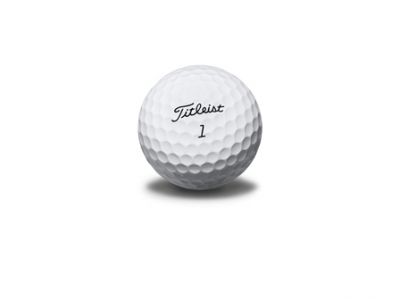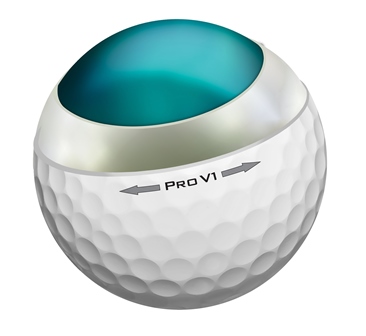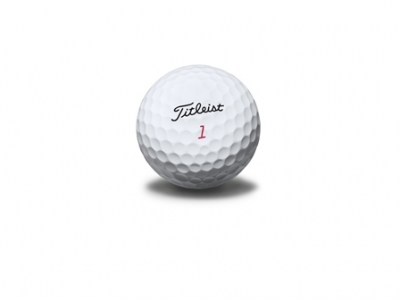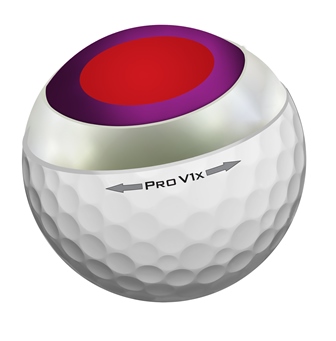By Jeffrey A. Rendall, Images Courtesy of Titleist
FAIRHAVEN, MA – There’s a common belief in golf these days that lower-swing golfers are wasting their money and potentially hurting their on-course performance by buying premium, Tour-level golf balls. A few manufacturers have even made humorous TV ads in the attempt to steer consumers away from the pro-level balls.
But not Titleist, producers of the top-selling golf balls on the market and traditional winners of the weekly ball counts on every professional Tour. The Titleist Pro V1 and Pro V1x models remain the stars of the Titleist line-up, and according to Michael Mahoney (Director, Golf Ball Product Management), the balls the pros use are just as useful for amateurs.
“It's a common misconception that a golfer uses only one swing speed during a round of golf. In reality, every player has a range of swing speeds they use for different shots throughout the round,” Mahoney said.
He continues, “For example, your driver swing speed is going to be much faster than your wedge swing speed. We design Pro V1 and Pro V1x to be the best performance options for all golfers of all swing speeds on all shots, particularly on scoring shots into and around the green. If a golf ball worked at only one swing speed, then it wouldn't work for all of the other shots during your round.”
 |
Mahoney has a point. If 25-40% of your total score is putts, you’re not really talking about 110 mph swing speeds.
Still, it’s not easy for the average person to easily see the difference between so-called “distance” balls and the premium jobs. Again, Mahoney explains: “You should never choose a golf ball based solely on the 14 drivers you're hitting per round. As a rule, high-handicap players hit more shots into and around the green than lower-handicap players.”
“For example, if you shoot 85, you're hitting about 37 shots to the green. In order to shoot lower scores, you need to minimize those shots into the green. Choosing a ball that performs best on those scoring shots -- and playing that ball consistently -- is crucial to shooting lower scores.”
That’s for sure. You can certainly notice the difference between the premium balls and the others around the green. For our part, we’ve found that the top-of-the-line golf balls stop a lot faster than their lower-tiered cousins. The difference is striking in some instances.
But assigning weight to the difference is a choice you’re going to have to make when shopping for your next dozen.
 |
Again, Mahoney offers advice. “All golfers, regardless of skill level or handicap, will benefit from playing Pro V1 and Pro V1x because of their exceptional distance, scoring performance and consistency. A "pure distance ball" may provide a few extra yards, but will also make it difficult to hold shots on the green and hit it closer to the hole.”
“You need to choose a golf ball that's going to provide the best performance on those scoring shots. The closer you hit it to the hole, the more putts you're going to make. The more putts you make, the lower your score is going to be,” he added.
Simple mathematics, and probably more important than a Tour equipment count to your own personal golf game – though it doesn’t hurt that so many great players choose the Pro V1 and Pro V1x. Somebody’s doing something right at Titleist.
But even the Pro V1 and Pro V1x has undergone some evolution over the years. The latest version is “new and improved,” of course, but unless you don a coat in the laboratory, how can we really tell?
“The new Pro V1 and Pro V1x are simply the best performing golf balls Titleist has ever made. New Pro V1 delivers softer feel and even more distance. New Pro V1x is also longer. They're also the most durable Pro V1 and Pro V1x models we've ever built,” Mahoney said.
 |
Technically speaking, the Pro V1 utilizes a new, softer ZG Process core technology resulting in the softest Pro V1 ever. Titleist is also using the ZG Process for the first time in the dual core of the Pro V1x to deliver even more consistent performance.
Both models also have a new Urethane Elastomer cover and paint system for longer lasting durability, resulting in a whiter, brighter finish during play. Golfers get improved durability along with the renowned Drop-and-Stop greenside control and feel that they rely on to score their best.
Beneath the surface, there’s also a lot going on. What’s the deal with all those layers, and what do they do?
“There isn't a single element of design that can determine the performance of a golf ball,” Mahoney expounded. “All of the layers of the golf ball have to work together. It's a symbiotic relationship between the core, the intermediate layer, the cover, the dimple pattern, etc. You can't change one element of design without it affecting all of the others.”
Since we can’t see those layers, there’s a certain level of trust involved – something that Titleist has earned in spades over the decades. The trademark company signature always brings reassurance that there’s quality there.
 |
We enjoyed playing the new Pro V1 and Pro V1x, just as we’ve always appreciated their predecessors. We can’t speak to whether there’s a big jump in distance – we’re not consistent enough – but we can say the “feel” of the golf balls is as good as you’re going to get.
We recommend that you try them along with other premium brands – and “non-premium” as well – to compare. That’s the only way you’ll be able to see the difference. The best place to do that is on the golf course.
And you’ll probably like what you see when you do try them. Maybe those “pro” golf balls really can help your game after all.
Details:
The New Pro V1/Pro V1x Golf Balls
Available at a golf or sporting goods store near you.
Customized options are available.
For more information on the latest Titleist products, check out the company’s website: http://www.titleist.com/
| Related Links | Comments on this article? | |
|
Maryland National Golf Club Hollow Creek Golf Club Rocky Gap Resort PB Dye Golf Club in Ijamsville Whiskey Creek Golf Club |
E-mail Jeff Rendall, Editor: jrendall@golftheunitedstates.com |












